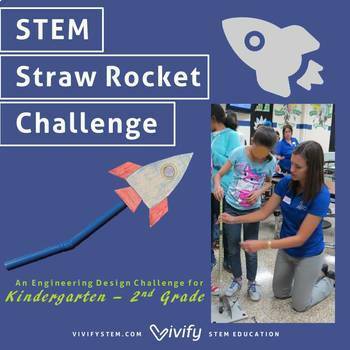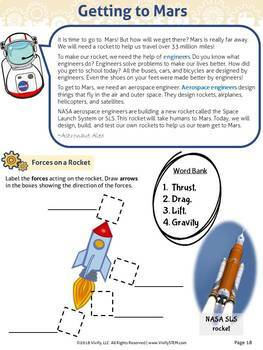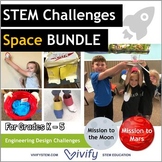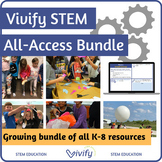Straw Rocket STEM Challenge (Forces & Motion)
- PDF
Also included in
- Need space STEM activities? Are you looking for Moon-themed activities to celebrate the Apollo anniversary? Launch your students into STEM with these space-themed STEM challenges that incorporate the engineering design process. This GROWING mega bundle is jam-packed for space STEM challenges for thePrice $128.52Original Price $159.90Save $31.38
- Are you in need of year-round STEM activities? This growing bundle includes our most popular STEM lessons and engineering design challenges for elementary! Activities are adaptable for 1st through 5th grade with guidance provided in the teacher notes. Need help with a STEM Curriculum Map? Grab our FPrice $410.72Original Price $513.40Save $102.68
- Are you in need of year-round STEM activities? This growing bundle includes ALL Vivify K-12 STEM lessons from team challenges, engineering design, semester-long STEM units, research projects, and more! Purchase everything for 20% off individual products! Here is a sample of what is included: Stage 1Price $990.24Original Price $1237.80Save $247.56
Description
** For 4th-10th grade Straw Rockets activity, see our product here**
Rockets are always a student favorite! This STEM challenge pack includes a paper straw rocket activity, straw rocket engineering design challenge using a Pitsco launcher, student handouts, and extension problems on variable testing and test result comparison.
Topics covered in rocketry STEM challenge:
- Forces & motion
- Engineering Design Process
- Rocket history
- Comparing numbers
- Variables & testing
- Paper Rocket Activity: Students make a paper rocket with the template provided and then launch with a smaller straw.
- Straw Rocket Challenge: Students design and build a straw rocket to be launched with a Pitsco straw rocket launcher. Students test different variables to achieve the farthest flight distance.
- Variable Testing: Students test different variables to observe which configuration produces the longest flight distance. Students measure flight distance and use comparative language and >.<, = to compare test results.
This packet includes:
- Detailed educator guide with links to resources
- Student handouts including rocket history coloring page, forces on a rocket, & parts of a rocket
- Student recording packet for the design and testing phases of the engineering design process
- Math extension questions to compare test results.
Looking for more STEM lessons? Our team of engineers and educators is dedicated to developing low-prep and high-quality STEM activities for any classroom! Click below to learn more:
- Vivify's Scope & Sequence + Standards Alignment
- Vivify's Resource Guide
- Learn about the 3 Stages of STEM
- Vivify STEM Membership
Customer Tips:
• Click the Green ★ to follow our store and get notifications of new products and freebies
• Leave feedback to receive TpT credit for use on future purchases
• Questions? Contact us in the Product Q&A section
♥ Connect With Us ♥
Email us: info@vivifystem.com








